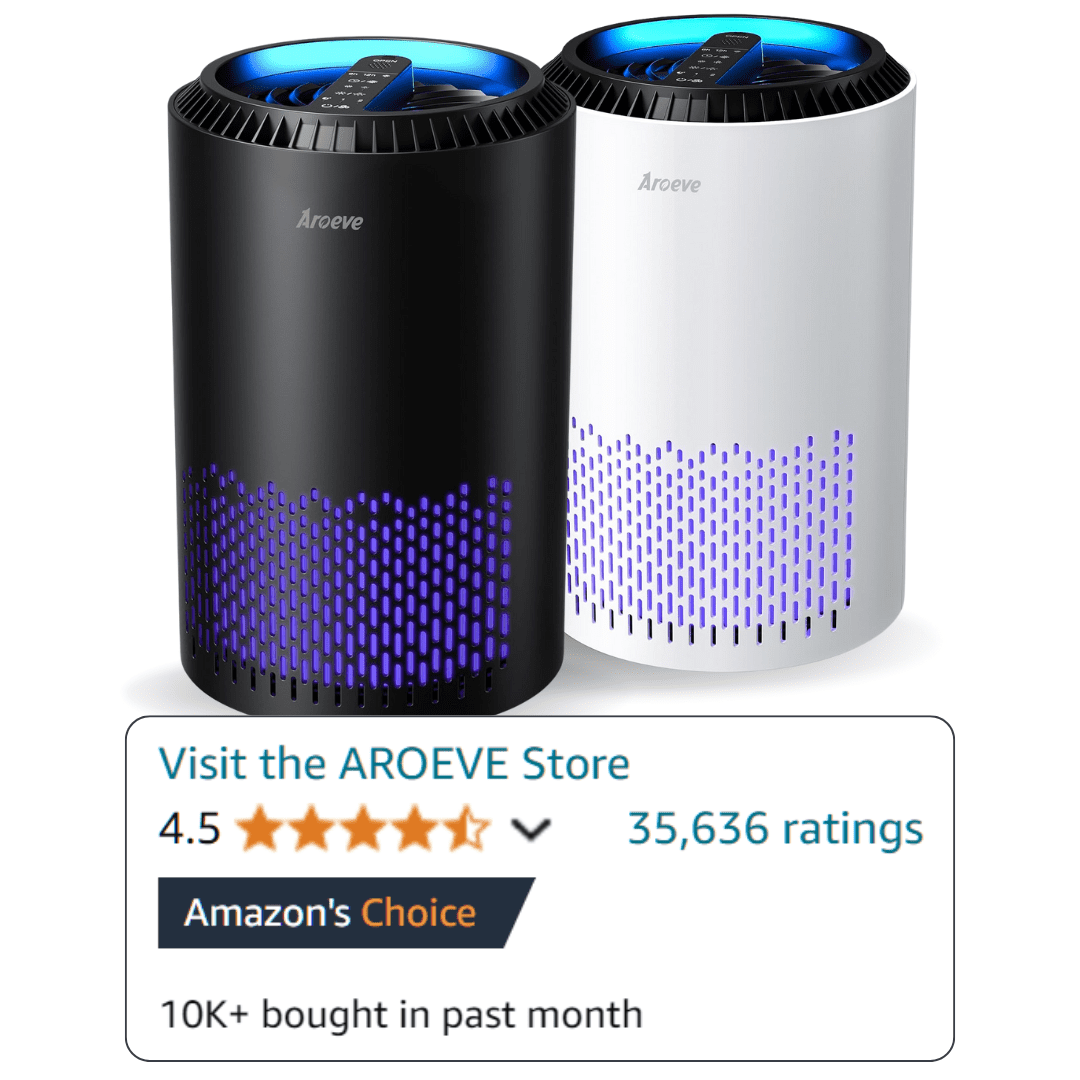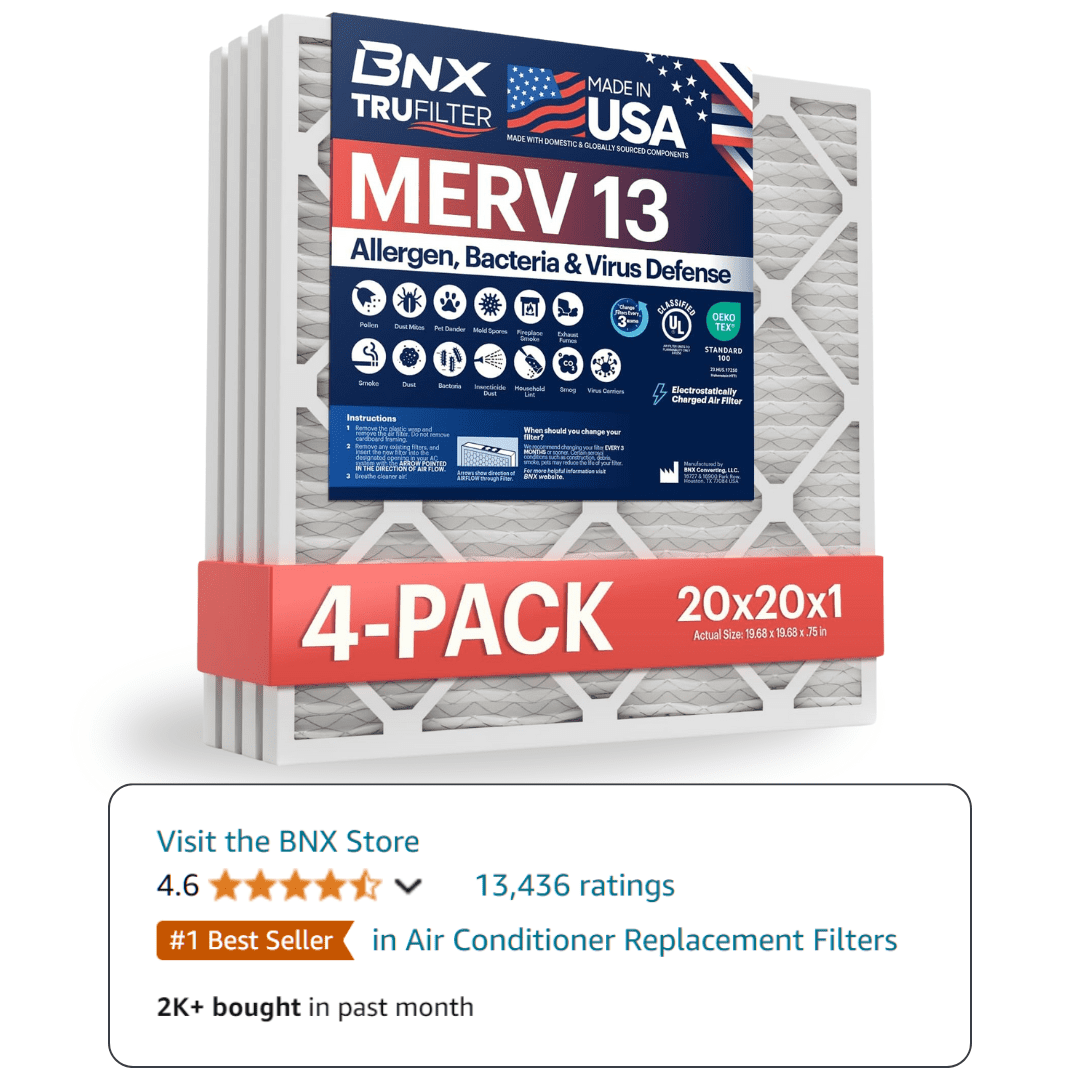Why Fast Humidity Reduction Matters (Health, Comfort, Property Protection)
High indoor humidity is more than a comfort issue. According to the EPA and ASHRAE, relative humidity above 60% can promote mold growth, dust mites, and bacteria. This can trigger allergies, worsen asthma, and damage electronics, furniture, and building materials. In the IAQ industry, we see homes with persistent humidity above 70% develop visible mold in as little as 48 hours. Fast action is critical to prevent health risks and costly repairs.
A real-world example: A homeowner in Houston called for help after a summer storm left their house at 80% humidity. Within 24 hours, condensation formed on windows and walls. Immediate intervention with portable dehumidifiers and HVAC adjustments prevented mold growth and saved thousands in remediation costs.
Immediate Solutions (Under 1 Hour)
Turn on Air Conditioning and Adjust Settings
Your air conditioner is your first line of defense. Set the thermostat to “cool” and lower the temperature by 2-3 degrees. Make sure the fan is set to “auto,” not “on.” This allows the AC to remove more moisture from the air. According to ASHRAE, modern AC systems can reduce humidity by up to 5% in under an hour when running efficiently.
Use Exhaust Fans Strategically
Run bathroom and kitchen exhaust fans for at least 30 minutes. These fans vent humid air directly outside. In IAQ fieldwork, we’ve measured a 3-5% drop in whole-home humidity after running all exhaust fans simultaneously for 45 minutes. Always use exhaust fans during and after showers, cooking, or cleaning.
Open Windows for Cross-Ventilation (When Appropriate)
If outdoor humidity is lower than indoors, open windows on opposite sides of the house to create a cross-breeze. This flushes out moist air quickly. Use a hygrometer to compare indoor and outdoor levels. In dry climates, this method can drop humidity by 5-10% in less than an hour. Never use this method if outdoor air is more humid.
Deploy Portable Dehumidifiers in Problem Areas
Place portable dehumidifiers in rooms with the highest humidity. Set them to 45-50% RH. Modern units can remove up to 20 pints of water in a few hours. For best results, close doors and windows in the target room. For recommendations, see our guide to the best whole home dehumidifiers.
Quick-Acting Solutions (1-6 Hours)
Install Bathroom and Kitchen Exhaust Fans
If your home lacks exhaust fans, install them in bathrooms and kitchens. Choose ENERGY STAR-rated models for efficiency. Properly installed fans can reduce humidity spikes from showers and cooking by 10-15% over several hours. For long-term comfort, connect fans to humidity sensors for automatic operation.
Use Desiccant Materials (Silica Gel, Activated Charcoal)
Place bowls of silica gel or activated charcoal in closets, cabinets, and small rooms. These materials absorb moisture passively. While not a substitute for mechanical solutions, they can lower humidity by 2-3% in enclosed spaces within a few hours. Replace or recharge desiccants regularly for best results.
Improve Air Circulation with Ceiling Fans
Set ceiling fans to rotate counterclockwise in summer. This increases evaporation and helps distribute drier air from AC or dehumidifiers. In IAQ industry testing, improved air movement can make a room feel 2-4 degrees cooler and reduce perceived humidity, even if actual RH drops only slightly.
Same-Day Solutions (6-24 Hours)
Seal Air Leaks and Moisture Entry Points
Inspect windows, doors, and foundation for leaks. Use weatherstripping, caulk, or foam sealant to close gaps. According to NAFA, sealing air leaks can prevent humid outdoor air from entering and reduce indoor humidity by up to 10% over a day. Pay special attention to basements and crawl spaces.
Address Plumbing Leaks and Standing Water
Check for leaking pipes, faucets, or appliances. Fix leaks immediately and dry any standing water. Even small leaks can add gallons of moisture to your home daily. In one IAQ case, a hidden dishwasher leak raised kitchen humidity by 15% until repaired.
Optimize HVAC System Performance
Schedule professional HVAC maintenance at least twice a year. Dirty coils, clogged filters, or low refrigerant can reduce your system’s ability to remove moisture. For more, see our guide to HVAC system maintenance. A well-maintained system can keep humidity in the ideal 30-50% range.
Emergency Humidity Crisis Response
Post-Flood or Major Leak Protocol
After a flood or major leak, act fast. Remove standing water with a wet/dry vacuum. Use multiple high-capacity dehumidifiers and fans to dry affected areas. Discard soaked carpets, drywall, and insulation if they cannot be dried within 24-48 hours. According to the CDC, mold can begin growing in as little as 24 hours in wet conditions.
Storm Damage Humidity Spikes
If a storm causes a sudden humidity spike, close all windows and doors. Run AC and dehumidifiers continuously. Use exhaust fans to vent moisture from bathrooms and kitchens. Monitor humidity with a hygrometer every hour. If levels remain above 70% for more than 24 hours, consult a professional.
When to Call Professionals
If you see visible mold, persistent condensation, or humidity remains above 70% despite your efforts, call an IAQ or HVAC professional. They can perform indoor air quality testing and recommend advanced solutions like whole-home dehumidifiers or ventilation upgrades. For more on industry standards, visit ASHRAE and EPA IAQ.
Measuring Success: How to Monitor Humidity Reduction
Use a digital hygrometer to track humidity in each room. Place sensors away from windows and doors for accurate readings. Record levels before and after each intervention. Aim for 30-50% RH for comfort and health, as recommended by ASHRAE and the EPA. If you see a steady drop after applying these methods, your efforts are working. For more on monitoring, see our guide to maintain comfortable humidity levels.
Long-Term Prevention Strategies
Prevent future humidity spikes with these strategies:
- Install a whole-home dehumidifier for consistent control. See our best whole home dehumidifiers guide.
- Schedule regular HVAC system maintenance.
- Use humidity sensors to automate exhaust fans.
- Seal air leaks and insulate your home.
- Address drainage issues around your foundation.
For advanced solutions, consult NAFA (nafahq.org) and ASHRAE for the latest industry standards.
Frequently Asked Questions
- What’s the fastest way to reduce humidity in a house?
- Turn on your air conditioner, run all exhaust fans, and use portable dehumidifiers in problem areas. These methods can lower humidity by 5-10% in under an hour.
- How quickly can I lower humidity levels?
- Immediate methods work in 30-60 minutes. Significant reductions (10-20%) may take 2-4 hours with dehumidifiers and AC.
- Can I lower humidity without a dehumidifier?
- Yes. Use AC, exhaust fans, and cross-ventilation if outdoor air is drier. Remove moisture sources and improve air circulation.
- What humidity level should I target?
- Aim for 30-50% relative humidity. This range is recommended by ASHRAE and the EPA for comfort and health.
- When is high humidity an emergency?
- If humidity stays above 70% for more than 24 hours, or you see condensation, mold, or water damage, act immediately.
- How do I know if my methods are working?
- Use a digital hygrometer to track changes. Look for less condensation, improved comfort, and no musty odors.
- What’s the difference between immediate and long-term solutions?
- Immediate solutions provide quick relief. Long-term strategies prevent future problems and maintain healthy humidity year-round.



